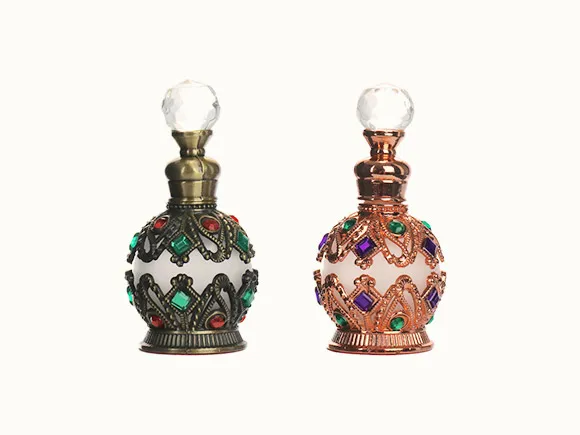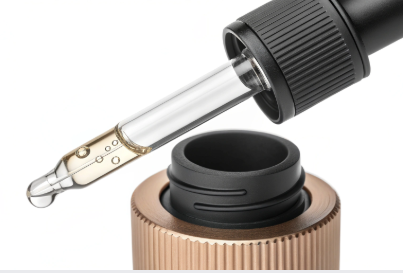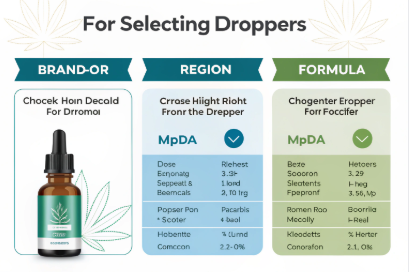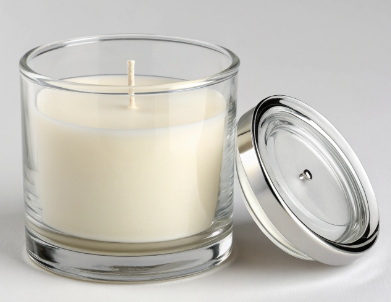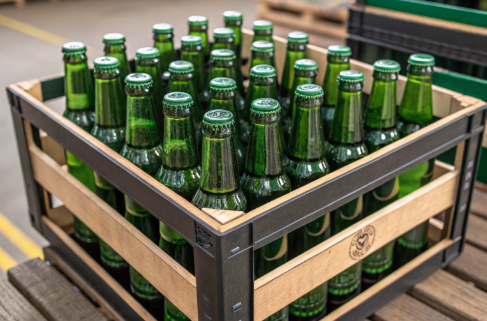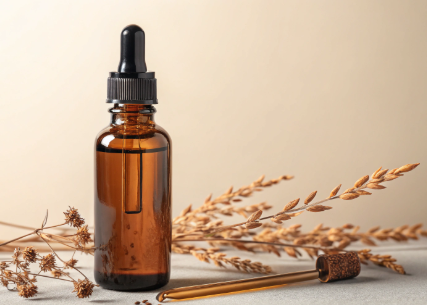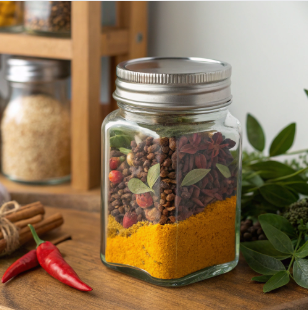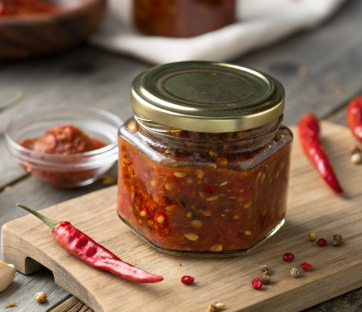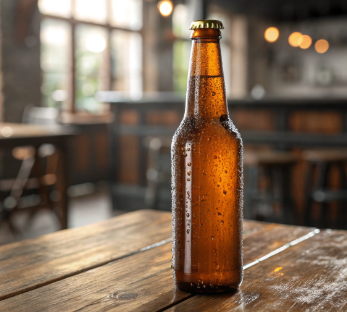Not all droppers are created equal—especially in essential oil packaging. Do you know which one best protects your product and brand?
Glass, plastic, and hybrid droppers each serve distinct functions in essential oil packaging. Glass is premium but fragile, plastic is durable but reactive, and hybrid designs offer balanced performance for most B2B needs.
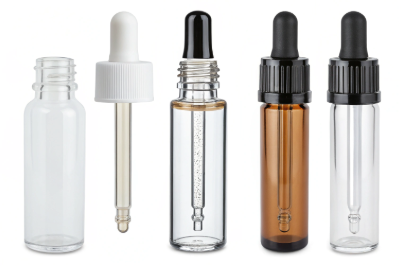 Let’s explore which dropper type makes the most sense for your brand’s application, shelf image, and end-user experience.
Let’s explore which dropper type makes the most sense for your brand’s application, shelf image, and end-user experience.
What Are the Main Types of Droppers for Essential Oil Bottles?
Choosing the right dropper is about more than looks—it directly affects your product's precision, stability, and safety.
There are three main dropper types in the essential oil industry: full glass droppers, plastic droppers, and hybrid droppers that combine both materials.
Let’s define each one clearly:
1. Glass Droppers
Made entirely of borosilicate or soda lime glass, these droppers are often paired with rubber bulbs and aluminum collars. They’re common in high-end aromatherapy products and apothecary-style skincare.
2. Plastic Droppers
Manufactured using PP (polypropylene) or PE (polyethylene), these droppers are lightweight, shatter-proof, and economical. Mostly found in mass-market or travel-oriented products.
3. Hybrid Droppers
A combination of a plastic cap and glass pipette, sometimes with a silicone bulb. These are designed to balance durability, accuracy, and aesthetics—often used in modern wellness brands.
At PauPac offer all three types, tailored to our clients’ brand position, usage goals, and price sensitivity.k, we
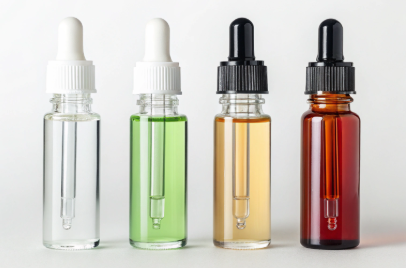
How Do Glass Droppers Compare to Plastic Droppers in Daily Use?
Looks are important—but so is function. Let’s examine how glass and plastic perform in real-world usage.
Glass droppers offer better chemical resistance and precise dosing, while plastic droppers excel in durability, cost, and leak prevention.
Here’s a detailed breakdown:
Chemical Compatibility
Essential oils are volatile and reactive. Some plastic droppers, especially low-grade ones, may interact with oils like lemon, cinnamon, or eucalyptus—causing discoloration or degradation. Glass remains inert and stable.
Precision
Glass tips are more rigid and allow for cleaner dosing. This matters when your product includes usage directions like “Apply 3–5 drops.” Plastic tips, being softer, can occasionally “snap” or over-drip.
Breakage Risk
Glass droppers can break during transport or in user hands. In contrast, plastic droppers are ideal for travel kits or kits targeting younger or elderly users who may struggle with delicate items.
| Feature | Glass Dropper | Plastic Dropper |
|---|---|---|
| Appearance | Premium, clear | Matte, opaque |
| Chemical Stability | High | Medium–Low |
| Durability | Fragile | Tough |
| Recyclability | Yes (glass recycling) | Conditional (depends on region) |
| Cost | Higher | Lower |
If your brand promises luxury and purity, glass is hard to beat. If your priority is durability and affordability, plastic makes sense.
What Is a Hybrid Dropper and When Should You Choose It?
Hybrid droppers are rising in popularity—and for good reason.
A hybrid dropper combines the durability of plastic components with the precision of a glass pipette, offering the best of both worlds.
Structure
Typical hybrid droppers include:
-
PP Cap: Lightweight, durable, brandable (can be colored, embossed, or printed).
-
Silicone Bulb: Softer than natural rubber, more chemically resistant.
-
Glass Pipette: Provides accuracy and clarity.
Best Use Cases
-
Mid-range aromatherapy brands balancing aesthetics and function.
-
Products with longer shelf life or high volatility oils.
-
Export-oriented SKUs needing tougher packaging for transit.
At PauPack, we help brands reduce risk by recommending hybrid droppers for cross-border shipments, especially to humid or high-temperature destinations. Our hybrid droppers also come in child-resistant versions for pharmaceutical clients.
Which Dropper Type Offers the Best Precision and Protection?
Product performance and safety depend not only on the bottle but on the dropper's engineering.
Glass droppers deliver top-tier precision and chemical safety, while hybrid droppers provide added mechanical protection.
Let’s dive into what each does best:
Accuracy in Dosage
For serums or oils where “just a few drops” matter, glass pipettes are superior. They maintain shape, don’t absorb the formula, and avoid build-up at the tip.
Plastic and hybrid tips may deform slightly over time, especially if made from LDPE or soft PP, which reduces control over time.
Oxidation & Exposure
Some plastic bulbs are more permeable to air, allowing oxygen to enter the bottle and degrade sensitive oils. Silicone and butyl rubber are better at preventing oxygen permeation—so consider materials carefully.
| Feature | Glass Dropper | Hybrid Dropper | Plastic Dropper |
|---|---|---|---|
| Dosage Control | Excellent | Good | Fair |
| Oil Protection | Excellent | Good | Poor–Medium |
| UV Resistance | Good (if colored) | Good | Varies by resin |
| Risk of Leakage | Medium | Low | Low |
At PauPack, we’ve developed dropper tip designs with a built-in “anti-drip ring” that enhances control and reduces post-use residue—especially valuable for beauty brands.
How Should B2B Buyers Choose the Right Dropper for Their Brand?
It’s not just about material—it’s about brand positioning, regulatory compliance, and shelf appeal.
B2B buyers should base dropper selection on formula compatibility, regional logistics, branding goals, and user demographics.
Formula Compatibility
Ask your filler or chemist for a Material Compatibility Sheet. Highly acidic or alcohol-based oils can degrade low-grade plastics or natural rubber bulbs. We recommend borosilicate glass + silicone bulbs for most potent oils.
Regional Compliance
Some countries—like Canada or Germany—require child-resistant closures for essential oils. Make sure your dropper is certified. PauPack offers CR-compliant droppers in both glass and hybrid formats.
Branding & Aesthetics
-
Luxury Spa? Go full-glass with gold anodized collars.
-
Minimalist Skincare? Choose matte black hybrid with silk print.
-
Eco-brand? Use recycled plastic droppers with bamboo sleeves.
Logistics & Packaging
Glass may require foam inserts or extra packaging layers. Hybrid and plastic droppers are lighter and cheaper to ship. For Amazon sellers or subscription boxes, that matters.
Conclusion
Choosing between glass, plastic, and hybrid droppers isn't just a technical decision—it’s a brand decision. Each type has trade-offs in cost, appearance, performance, and sustainability.
At PauPack, we tailor dropper solutions to fit your unique needs—whether you're launching a new serum, scaling a skincare line, or rebranding an aromatherapy set. Let’s design packaging that delivers on both safety and style.




